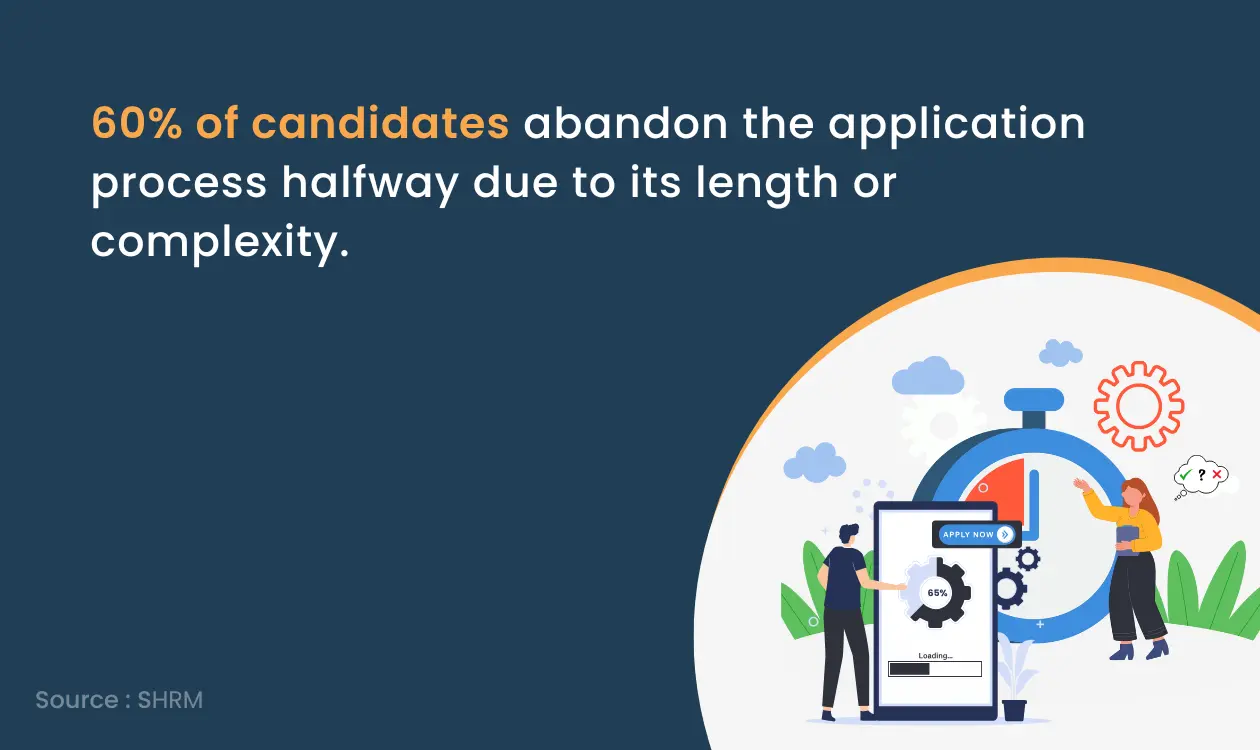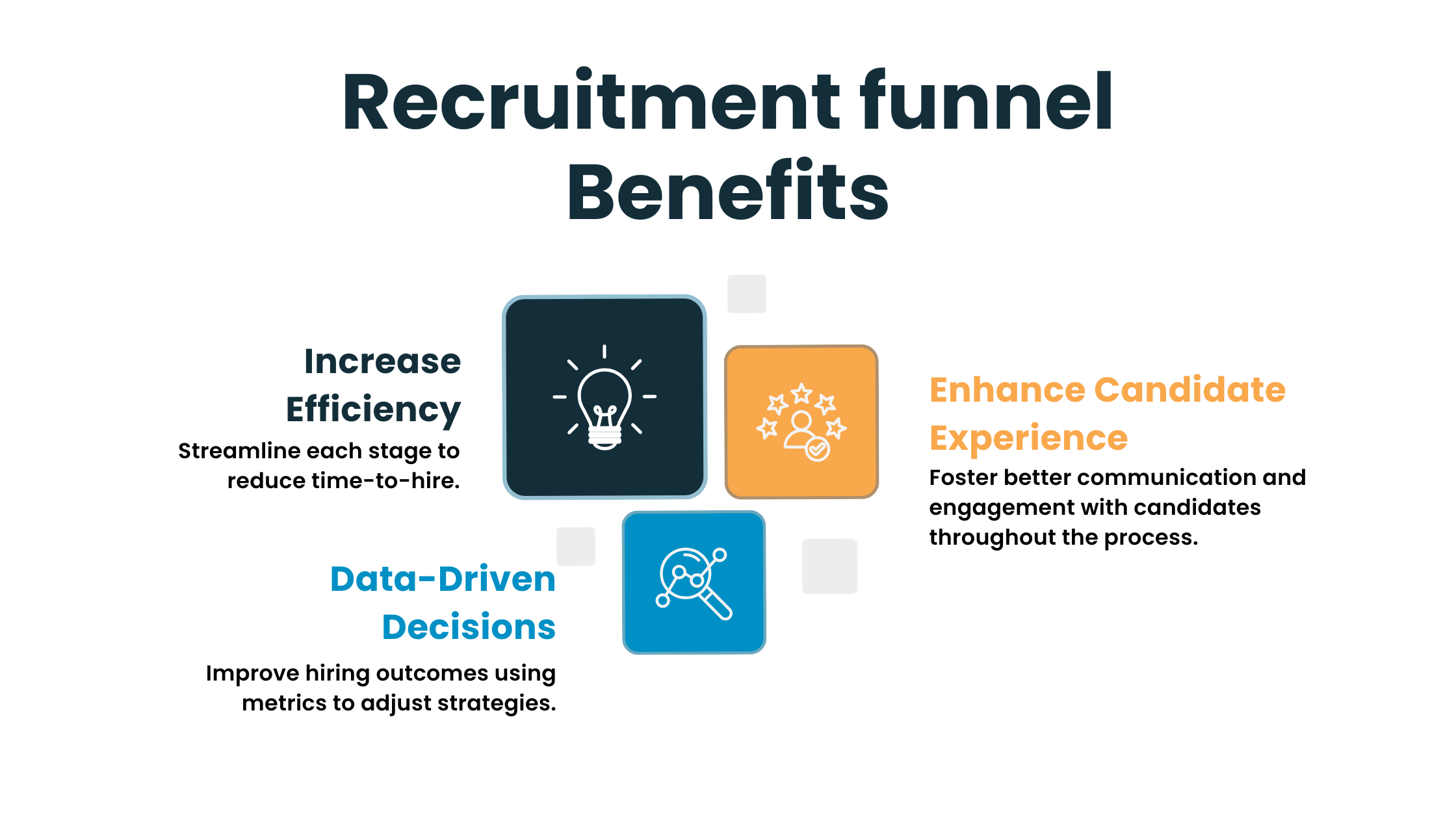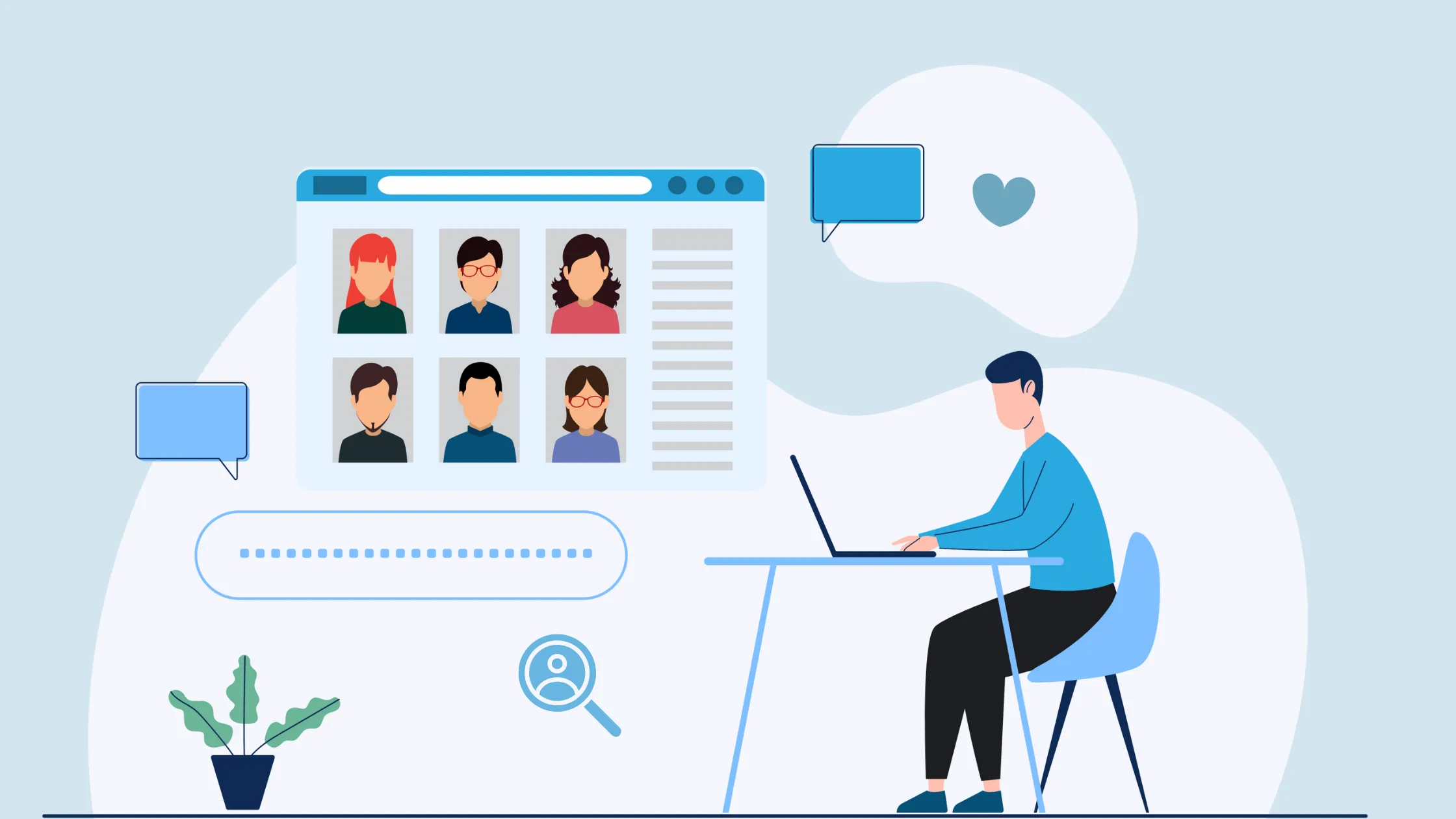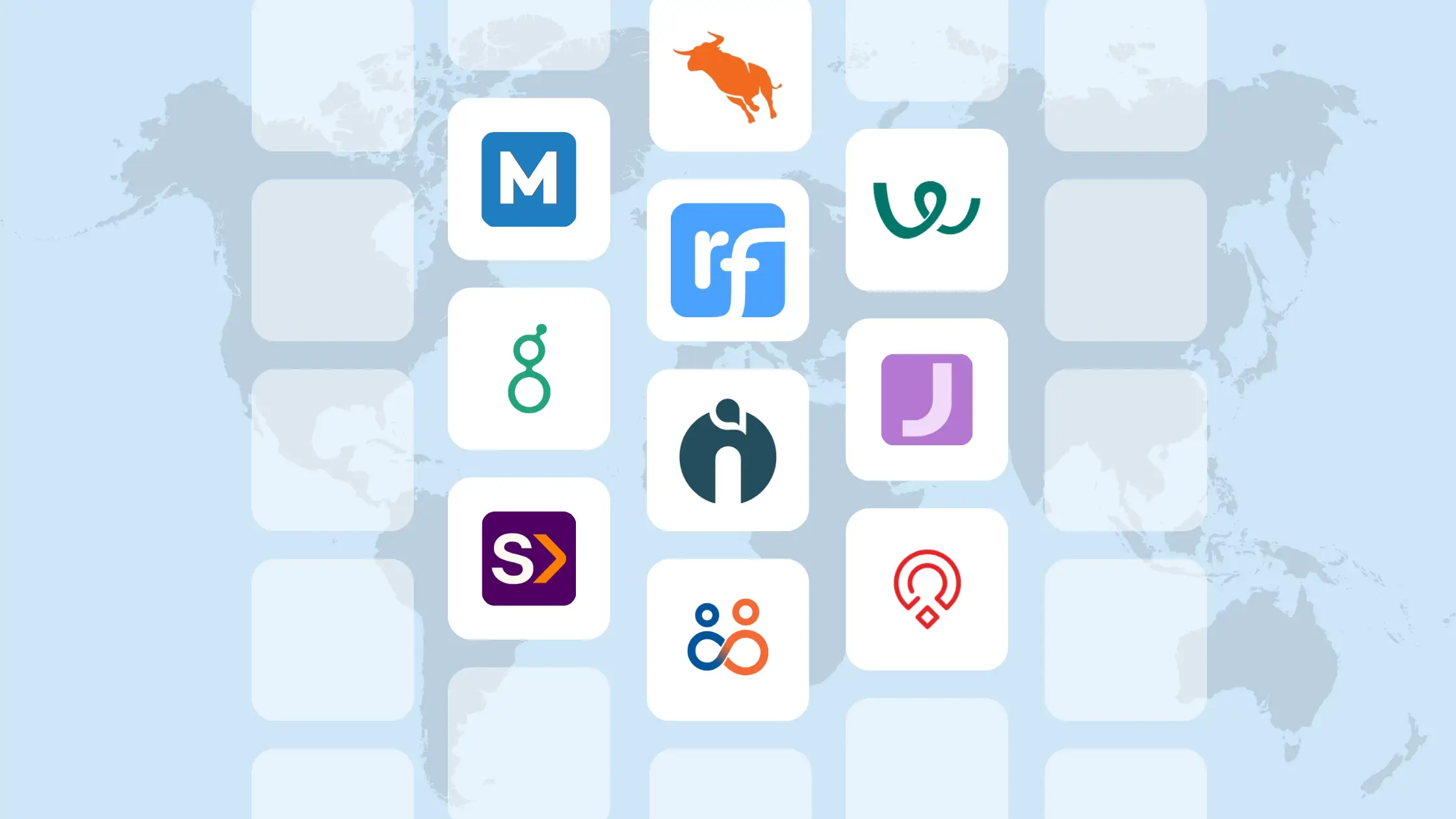When there are too many candidates, filtering out and finding the right one is difficult, right?
What is the solution for this? It’s a recruitment funnel.
Think of the recruitment funnel like a tasty ice cream cone. At the top, you've got a scoop overflowing with potential candidates. As you move down, there is less ice cream (candidates drop out), leaving you with a smaller, more manageable group. Finally, at the bottom of the cone, you've got that perfect bite of chocolate—your ideal hire!
The recruitment funnel is a roadmap that guides candidates from the first time they hear about your job opening to the moment they get hired.
In this, you'll learn 7 stages, from the initial awareness phase, where candidates first discover your brand, through the consideration and interest stages, all the way to the final decision-making and hiring process.
So, if you want to taste the perfect bite of the chocolate (ideal hire), then let's dive into this blog.
What is a Recruitment Funnel & Why It’s Important?
The recruitment funnel is the structure or framework that helps you visualise how candidates move from start to finish. It’s a visual model that represents the different stages candidates go through, from when they first hear about a job to when they're hired. It's called a funnel because it starts wide (with lots of candidates) and narrows down as you filter out those who don’t fit. The focus is on moving candidates through stages and filtering them down to the most qualified.
The recruitment funnel is crucial because it organises the hiring process, helping you handle a large number of candidates more effectively. By filtering candidates at each stage, you can quickly focus on the most qualified, saving time and effort.
It also helps track important metrics like time-to-hire and candidate quality, allowing you to spot and fix any delays or weak points. This leads to faster hiring and better results. In short, it makes hiring more efficient and improves the quality of your hires.
Standard Stages of the Recruitment Funnel
The recruitment funnel’s sub-stages may differ from organisation to organisation.
It depends on these 3 criteria:
- Type of hiring (temporary or permanent hiring)
- Type of roles (senior or junior position),
- Normal recruitment or mass recruitment.
So, let’s learn the following standard stages and find your ideal candidate from your talent pool.
1. Awareness
Brand awareness is the first vital stage to bringing in more candidates. The goal in this stage is to reach as many people as possible. At this point, they may not be actively looking for a job, but you’re showcasing your brand to plant the idea that your company is a great place to work.
The main focus is on raising employer branding to attract many ideal candidates. To raise awareness, you can use this medium, such as the company's website, social media pages, and job boards.
On these mediums, you can showcase the positive points of the organisation.
It is a core element of recruitment marketing. Recruiters will get more reach as they spread more awareness of the brand.
Proven Best Tips for HR
- Use Employee-Generated Content: Involve employees in sharing their stories through blog posts, videos, or social media takeovers for a more authentic representation of your company culture.
- Sponsor Niche Industry Events: Sponsor specialised industry events or meetups (e.g., virtual coding events for developers) to reach the right candidates.
- Run Targeted Awareness Campaigns: Use social media ads to showcase your company culture or open roles tailored to the demographic or skills you're targeting.
2. Attraction
The Attraction stage is where you draw the attention of potential candidates to your job openings. It’s about showcasing your company and roles in a way that appeals to the right talent. Rather than just posting on job boards, use platforms like LinkedIn and Instagram to reach candidates where they spend their time. Highlight your company culture, share employee stories, and use engaging content to create interest.
Your employer branding is key here—make sure your job descriptions are clear and concise and highlight what makes your company unique, such as career growth opportunities or work-life balance. The goal in this stage is to make a strong first impression and spark interest among quality candidates.
Proven Best Tips for HR
- Create a Clear EVP (Employee Value Proposition): Highlight what sets your company apart, whether it's flexibility, career growth, or company culture. Ensure it's included in all your job ads.
- Use Interactive Job Ads: Craft engaging listings with videos, employee testimonials, or a ‘Meet the Team’ section to stand out from traditional text-based ads.
- Target Passive Candidates with Retargeting Ads: Use retargeting ads to re-engage candidates who visited your careers page but didn’t apply, drawing them back into your recruitment funnel.
3. Interest
In the Interest stage, your goal is to keep candidates engaged once they’re aware of your company. It’s like building a relationship—you’ve sparked interest, and now you need to maintain it.
The main objective is to show candidates that you value them and that your company is an exciting place to work, keeping them engaged and moving them closer to applying.
Proven Best Tips for HR
- Create Engaging Job Descriptions: Make job descriptions clear and compelling, highlighting unique aspects like flexible work, growth opportunities, and company culture.
- Share Engaging Content: Use team testimonials, videos, and blog posts to offer candidates a glimpse into your company culture.
- Use Recruitment Chatbots: Let chatbots handle common questions 24/7, keeping candidates engaged even when you're unavailable.
4. Application
Once you've sparked the interest of potential candidates and they've decided to apply, the next crucial stage in the recruitment funnel is the Application stage.
Here, they formally express interest in the role. At this point, simplicity is key.
Proven Best Tips for HR
- Simplify the Application Process: Make your application form short and mobile-friendly. A one-click apply option (through LinkedIn or Indeed) can also help minimise friction for candidates who are passively browsing.
- Provide Real-Time Feedback: Implement AI chatbots that give real-time updates to candidates during the application process. Let candidates know their application status immediately after submission, offering transparency and keeping them engaged.
- Mobile-Optimized Applications: Ensure that the entire application process is mobile-friendly. Many candidates apply on the go, and a seamless mobile experience will make a big difference in the number of applications you receive.
5. Pre-selection or evaluating
In this stage of the recruitment funnel, you’ll get the qualified ones. It eliminates those who don't fit the job requirements. Once recruiters receive applications, they start to assess resumes and their skills. At this point, technology can serve as a best friend. So, you can use tools like resume parsers and assessment tools to assess candidates.
It will automate the manual tasks of screening thousands of resumes and testing technical skills. This stage offers the real gist of the candidate's strengths and weaknesses.
You can use interview scheduling and interview management software during this stage. It also allows you to send interview invite links automatically. The interview management system provides the behavioural feedback skills of the applicants.
Proven Best Tips for HR
- Blind Recruitment Techniques: To reduce unconscious bias, HR can implement blind recruitment, where details like names, ages, and schools are hidden during the evaluation process. This ensures a fair assessment based solely on skills and experience.
- Set Clear Evaluation Benchmarks: Establish consistent criteria for assessing candidates to ensure fairness and efficiency in the process.
6. Interview
This stage offers the real gist of the candidate's strengths and weaknesses. Interviews help you evaluate a candidate’s soft skills, communication abilities, and overall fit for the company culture, which isn’t always evident on paper.
Think of the interview stage as the heart of the recruitment funnel. You’re not just assessing their technical skills anymore; you’re measuring their potential to work well with your team and align with company values.
Proven Best Tips for HR
- Structured Interviews: Implement structured interviews where every candidate is asked the same set of questions. This reduces bias and allows for a more objective evaluation of candidates.
- One-Way Video Interviews: Use one-way video interviews where candidates record their answers to a set of questions at their own convenience. This saves time for both the recruiter and the candidate. Tools like Spark Hire or myInterview are great for this.
- Use behavioral questions: Understand how candidates handled challenges in the past. Example: “Tell me about a difficult project you managed.”
7. Hiring
Hiring is the last and crucial stage of the recruitment funnel, and it’s where all your efforts so far have come together. At this point, you’ve interviewed your shortlisted candidates and have identified the best fit for the role. Now, it’s time to extend a formal offer, but this stage requires careful handling to ensure everything goes smoothly.
Just because you’ve made it to this step doesn’t mean the hard work is over. A poorly executed hiring process can lead to candidates rejecting your offer or having second thoughts. Let’s walk through how you can nail this stage:
Proven Best Tips for HR
- Move quickly with the offer: Don’t let too much time pass between the final interview and the job offer. Candidates often have multiple offers on the table, and delays might make them choose another company.
- Negotiation Support: Provide candidates with transparency during the offer negotiation process. Offer them resources, such as salary benchmarks or benefits guides, so they feel informed and supported while making their decision.
- Implement Fast and Seamless Onboarding: Use onboarding software (such as Sapling or BambooHR) to automate documentation, training, and orientation processes.
What Key Metrics Should You Track at Each Recruitment Funnel Stage?
When managing a recruitment funnel, tracking the right metrics is essential to ensure you're optimising each stage and identifying areas for improvement. These recruitment Funnel metrics help you understand how effective your strategies are and where adjustments are needed to enhance efficiency. Let’s walk through some key metrics that are important to track at each stage:
| Stages | Key Metrics |
| Awareness | Brand Awareness: Measure how visible your company is to candidates through website traffic, social media engagement, and job post views. |
| Attraction | Click-Through Rate (CTR): Tracks how many people clicked on your job ads. |
| Source of Hire: Shows which channels are bringing in the most applicants. | |
| Interest | Conversion Rate: Measures how many job viewers applied. |
| Time Spent on Career Page: Indicates candidates’ interest in your roles. | |
| Application | Application Completion Rate: Tracks how many candidates complete the application process. |
| Mobile Application Rate: Measures how many candidates apply via mobile. | |
| Pre-Selection or Evaluation | Qualified Candidate Rate: This shows how many candidates pass initial screening and meet qualifications. |
| Interview | Interview-to-Offer Ratio: Measures how many interviews lead to job offers. |
| Interview Feedback Score: Rates candidates’ performance during interviews. | |
| Hiring | Offer Acceptance Rate: Tracks how many candidates accept job offers. |
| Time to Hire: Measures how long it takes to fill a position from job posting to offer acceptance. |
By monitoring these metrics at each stage, you’ll gain valuable insights into your recruitment process and make data-driven decisions to refine and improve each step, ensuring faster, more efficient hiring.
How Can You Effectively Manage Your Recruitment Funnel?
Managing a recruitment funnel might seem like a big task, but if you break it down into clear steps, it becomes much more manageable. Here are five straightforward steps to ensure your recruitment funnel runs smoothly and gets you the best talent possible.
1. Extend the Candidate Pool
To find the best candidates, you need to look beyond job boards. Use LinkedIn to reach passive candidates who aren't actively job hunting. You can also tap into niche platforms like Stack Overflow for tech roles. The wider your search, the better your talent pool.
2. Precisely Determine the Talent You Want to Hire
Clear criteria save time. Work with hiring managers to nail down must-have skills and qualities. For instance, if you're hiring a sales lead, you might need someone with 5+ years of leadership experience and strong negotiation skills. Feed these details into your ATS, which will help screen candidates and keep the process focused.
3. Assess Soft Skills Alongside Technical Skills
During interviews, dig deeper than qualifications. Ask questions that reveal soft skills. For example, Amazon asks candidates, "Tell me about a time you handled conflict at work." This helps you see how they'll fit into your team.
4. Analyze Every Stage of Your Recruitment Funnel
Track each stage. If candidates drop off after applying, your process might be too complex. Take a page from Shopify, which simplified its application to improve conversion rates.
5. Utilise Recruitment Metrics to Measure Efficiency
Use metrics like time-to-hire and cost-per-hire to spot inefficiencies. If your time-to-hire is longer than average, you might need to speed up your interview process. Tools like ATS provide real-time analytics to help you monitor performance. Always review these metrics to fine-tune your funnel.
By applying these steps, you’ll make your recruitment funnel more efficient and find top talent faster, using data to guide your improvements and practical tools to simplify the process.
Recruitment Funnel vs. Traditional Hiring
Let’s talk about the difference between using a recruitment funnel and the more traditional approach to hiring.
In a traditional hiring process, things can feel a bit scattered. You post a job ad, review resumes, conduct interviews, and hope for the best—often without a clear, structured plan. It’s a bit like putting out fires as they come up, which can lead to inefficiencies, missed opportunities, and a longer time-to-hire.
Now, with a recruitment funnel, you’re taking a more strategic approach. Each stage, from attracting candidates to hiring them, is clearly defined and optimised. The focus is on guiding candidates smoothly through the process, ensuring that no one falls through the cracks and that the best talent moves forward.
Here’s why a recruitment funnel works better:
- Increase Efficiency: Streamline each stage to reduce time-to-hire.
- Enhance Candidate Experience: Foster better communication and engagement with candidates throughout the process.
- Data-Driven Decisions: Improve hiring outcomes using metrics to adjust strategies.
In short, a recruitment funnel brings structure, speed, and strategy to your hiring process, making it far more effective than the traditional, more ad-hoc approach.
What Are the Common Recruitment Funnel Mistakes to Avoid?
When it comes to managing a recruitment funnel, there are a few common pitfalls that recruiters often face. These mistakes can lead to inefficiencies, missed opportunities, and, ultimately, hiring the wrong candidate. Let’s look at three key mistakes you should avoid:
1. Not Targeting the Right Audience at the Awareness Stage
One of the most common mistakes is failing to target the right audience from the get-go. If your job ads are too broad or not reaching the right candidates, you’re casting your net too wide. You might get a lot of applications, but not necessarily the right ones. Make sure your job ads are tailored to the specific roles you’re hiring for and are posted on platforms where your ideal candidates are active.
2. Too Many Barriers in the Application Stage
At the application stage, a mistake many recruiters make is creating an application process that’s too complicated or lengthy. Candidates may abandon the process halfway through if it takes too long or requires too much information. Keep your application process simple and mobile-friendly to reduce candidate drop-off.
3. Failing to Monitor and Adjust the Funnel
A big mistake is not monitoring the funnel’s performance at every stage. If you don’t track metrics like conversion rates between stages, time spent at each step, or drop-off points, you’re missing opportunities for optimisation. Regularly reviewing and tweaking your funnel based on these metrics will help you spot bottlenecks and improve overall efficiency.
By avoiding these common mistakes, you’ll keep your recruitment funnel running smoothly, attract the right talent, and improve your overall hiring process. Remember, small adjustments can make a big difference!
What Tools Can Enhance Your Recruitment Funnel?
Managing a recruitment funnel efficiently requires the right tools at each stage. Here are some key tools that can streamline your funnel, from attracting candidates to hiring them:
1. Recruitment Marketing Platforms: Tools like SmashFly or Beamery help you raise brand awareness and attract talent through targeted campaigns, job ads, and social media, enhancing the top of your funnel.
2. Career Site Optimization Tools: Platforms like Phenom People or Jibe improve your career site’s experience with personalised job recommendations and chatbots, making it easier for candidates to apply and boosting conversions at the attraction stage.
3. Candidate Relationship Management (CRM): Tools like Avature and iSmartRecruit allow you to nurture candidate relationships by sending job alerts, newsletters, and updates, keeping candidates engaged through the interest stage.
4. Assessment and Screening Tools: Platforms like Pymetrics and Codility automate assessments, helping you evaluate candidates’ skills and fit during the evaluation phase.
5. Funnel Analytics Tools: Tools like Google Analytics offer data-driven insights into each funnel stage, helping you optimise processes by identifying bottlenecks and improving efficiency.
By leveraging these tools, you can optimise every stage of your recruitment funnel, ensuring smoother candidate flow and a more efficient recruiting process.
How to Build a Recruitment Funnel for 2025?
In 2025, building a recruitment funnel means integrating advanced technology and data-driven strategies to attract and hire top talent efficiently. Here’s how:
- AI-Enhanced Outreach: Use AI to predict which passive candidates are open to job changes and send personalised messages that align with their career goals, improving your chances of attracting top talent.
- Automated Candidate Engagement: Engage candidates with recruitment chatbots and automated SMS to handle inquiries, schedule interviews, and keep communication flowing 24/7, ensuring a seamless candidate experience.
- Predictive Analytics for Applications: Use predictive analytics to pre-fill candidate details and recommend suitable roles, shortening the application process while improving job fit.
- AI for Pre-Selection: Automate resume screening with AI to analyse both hard and soft skills, reducing bias and ensuring you focus on the best candidates.
- Gamified Interviews: Implement gamified assessments and AI-driven interview tools to gain deeper insights into candidates’ problem-solving skills and behaviour.
- Automated Hiring & Onboarding: Automate offer letters and onboarding tasks using virtual platforms to give new hires an immersive introduction to your company.
By combining AI, automation, and data, your 2025 recruitment funnel will be more efficient, personalised, and engaging - helping you attract and hire top talent faster.
Final Thought On Recruitment Funnel
So, there you have it! The recruitment funnel isn't just a fancy term; it's a roadmap that can make your hiring process smoother and more effective. By breaking down the journey from awareness to onboarding, you can pinpoint where you're losing candidates and make improvements.
A well-managed funnel helps you do that by keeping candidates engaged and interested throughout the process. Don't be afraid to experiment and tweak your funnel as needed. Every company is unique, and your recruitment funnel should reflect that.
Lastly, always keep the candidate experience at the heart of your funnel strategy. Happy candidates make for happy employees, and that's a win-win for everyone. So, go ahead, give your recruitment funnel some TLC, and watch as it transforms your hiring game.













